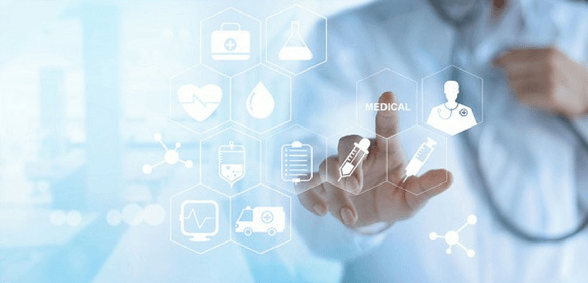
Technology is pervasive; health-tech is a welcome addition to the practice setting – but, unless it is all joined-up, are the benefits truly realised? Frederik Brabant, MD and chief medical information officer at Nuance Communications, discusses how the implementation of interoperable programmes, speech recognition solutions and voice automation is helping healthcare move into a new era
The business of healthcare is tough and getting tougher; technology is an effective solution. New clinical technology brings the future ever closer and, with the right investment, time-consuming documentation could become a thing of the past.
However, while software solutions – that do everything from patient queuing to addressing verification – have, and continue to be, introduced, the lack of interoperability has left much to be desired and doctors are calling for innovations and time-saving tools. Technology needs to be joined-up in order to reap the benefits.
The clinical documentation dilemma
The term ‘interoperability’ is one that is starting to change the landscape for healthcare. Those in the sector agree that healthcare has lagged behind other sectors in the development and implementation of advanced software. For years, those in general practice have been battling with time-consuming clinical documentation; seeing close to 70 patients a day and documenting these visits via repetitive, in-house transcriptions and dictations that would take weeks to review and sign-off.
The reason for this is that healthcare is organised locally or regionally at practice and trust level; this results in service level variations across trusts, and inhibits the ability for trusts to share services, data and expertise.
Need for speed…in a time of regulation
More regulations and more data require more robust software. Not having ready access to information delays patient care, reduces patient satisfaction and, ultimately, affects the performance of doctors and the wider trust.
This is where interoperable systems are required to help ensure a fast-paced surgery can thrive. Accurate and rapid speech recognition allows voice automation to enable doctors to compile electronic health records (EHRs), saving huge volumes of time.
These tools bring doctors closer to the efficiencies seen in other mainstream industries. Fewer clicks, a vastly improved workflow and the eradication of transcriptions are the positive outcomes of implementing such systems – systems that are coded and written as one simple solution mean there are no costly, complex interfaces to construct or maintain. Information is available and the data is clean-cut, making it highly valuable for research and wider population analysis.
The new, data-led healthcare era
The availability of these rapid speech recognition systems and voice automation are helping to bring healthcare into a new era of health information technology. The efficiencies that they facilitate highlight how inefficient and antiquated legacy health record systems are and how strongly doctors are striving for innovative and time-saving tools.
This clinical technology will enable tomorrow’s doctors to focus more time and more resources on driving a next-level service to benefit those most in need.
Don’t forget to follow us on Twitter, or connect with us on LinkedIn!

Be the first to comment